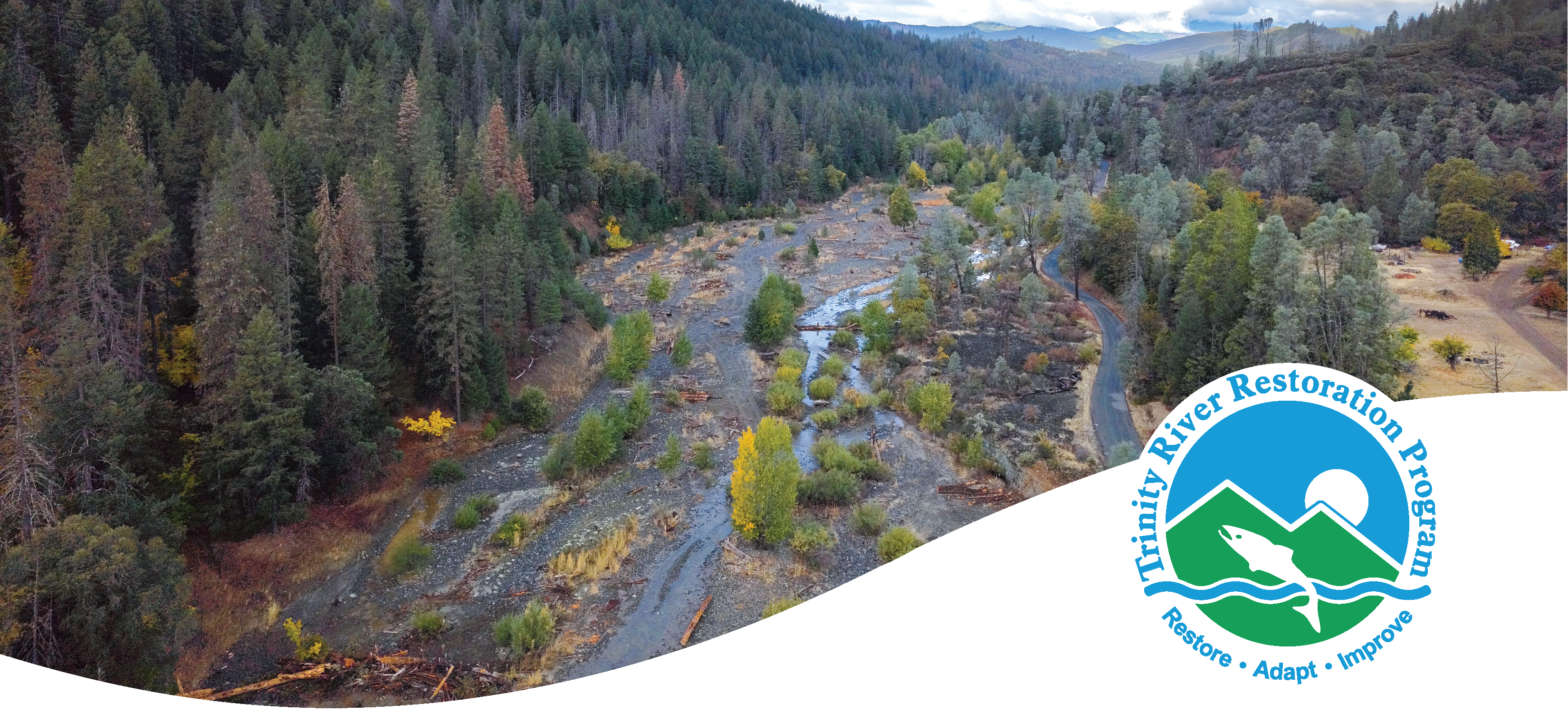
Header photo: Aerial image looking downstream at the first Stage 0 design in California, Indian Creek rehabilitation site in October 2024. [Elliot Sarnacki, Trinity River Restoration Program].
River Riffle Newsletter – November
Contents
- Current Conditions
- Reading, Listening & Watching
- Outreach Update: New webpage for Science on Tap Series
- Featured Article: The Language of Flow
- Trinity River Animal Spotlight: Bug of the month: October Caddisflies
- Upcoming Meetings and Events
Current Conditions
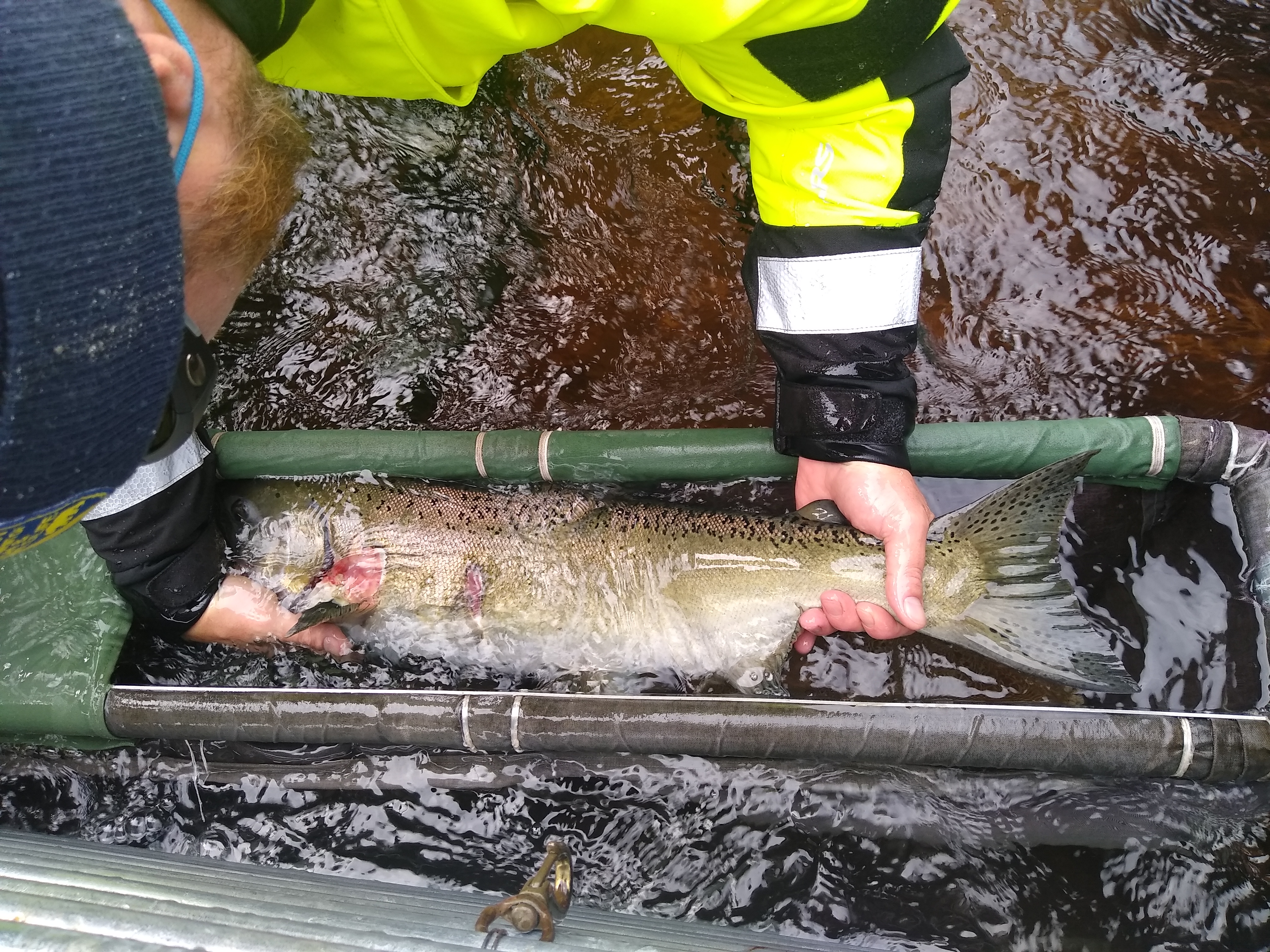
The Program is awaiting direction from the Department of the Interior for water year 2025 flow management.
In September, the Trinity Management Council voted to approve adaptive changes to ecological water releases from Lewiston Dam into the Trinity River. The recommendation was a collaborative proposal developed between the Trinity River Restoration Program’s Flow Workgroup and representatives of Trinity County. The vote recommends a synchronized flow release and an increase to wet-season baseflows. No additional water was approved to be used for these recommended changes.
Click to read about the 2025 Recommended Changes to Environmental Flows
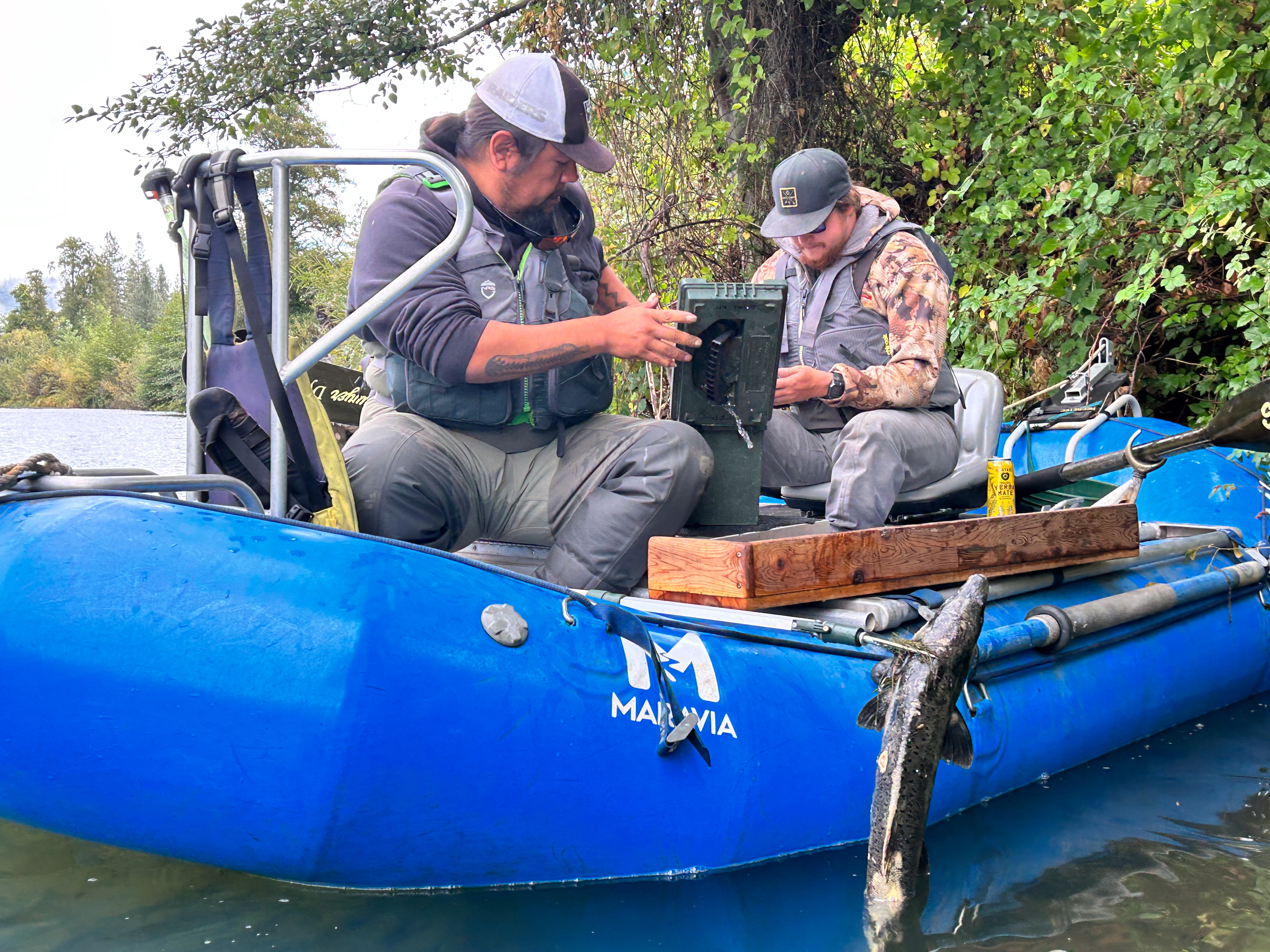
Redd and Carcass surveys are 10 of 16 weeks complete for the 2024 season. Preliminary data are showing counts trending slightly lower than the 2002-2023 median and mean to date. As of November 8, crews from the Hoopa Valley Tribe, US Fish and Wildlife Service, CDFW and the Yurok Tribe have counted 2,263 redds in the 14 reaches surveyed in the Trinity River. Interesting observations unique to the 2024 spawning season are focused around redd counts in reaches 4, 5, and 6 which are on par with reach 1 (at the Lewiston Dam), a location that typically outperforms lower river reaches.

As the spawning season continues it is important to make sure to keep dogs away from salmon and trout carcasses. Salmon Poisoning Disease is a potentially fatal condition for dogs who eat raw (or cold smoked!) trout or salmon. To cause harm, the fish must be infected with a bacteria-like organism Neorickettsia helminthoeca, which is transmitted by the parasitic flatworm Nanophyetes salmincola. If caught in time, the infection can be treated, however if left to develop most dogs will succumb to the parasite. To read more, click here (CDFW warns dog owners to be mindful of salmon poisoning disease).
Reading, Listening, Watching
Fall Means Feeding Frenzy for Black Bears | California Department of Fish and Wildlife
November 1, 2024.
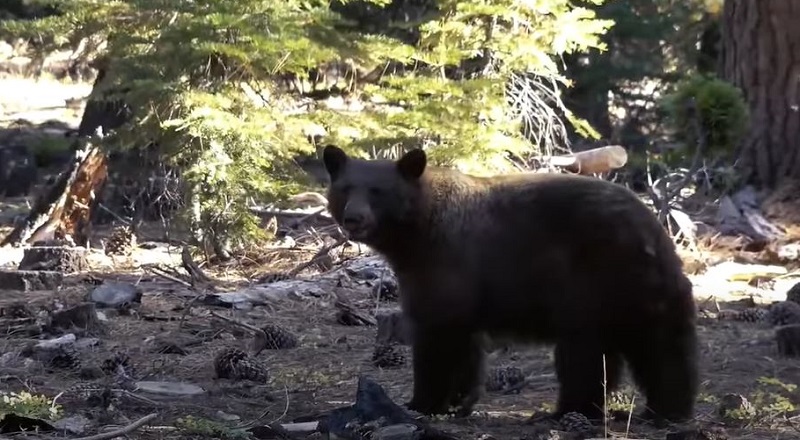
Autumn is here, and black bears are entering a temporary physiological state known as “hyperphagia.” During hyperphagia, also known as the fall feeding frenzy, bears consume as much as they can to bring their fat stores to a level where they can survive the quickly approaching winter months. Continue Reading …
October is Over – What it means for this water year and some other musings | California Water Blog
By Jay R. Lund. November 10, 2024.

October 2024, the first month of the 2025 Water Year, has been dry, the 16th driest October in 103 years of Northern California precipitation records. And the forecast for the next 10 days shows little for most of California. Does this dry October mean 2025 will be a drought year? Continue reading …
Outreach Update
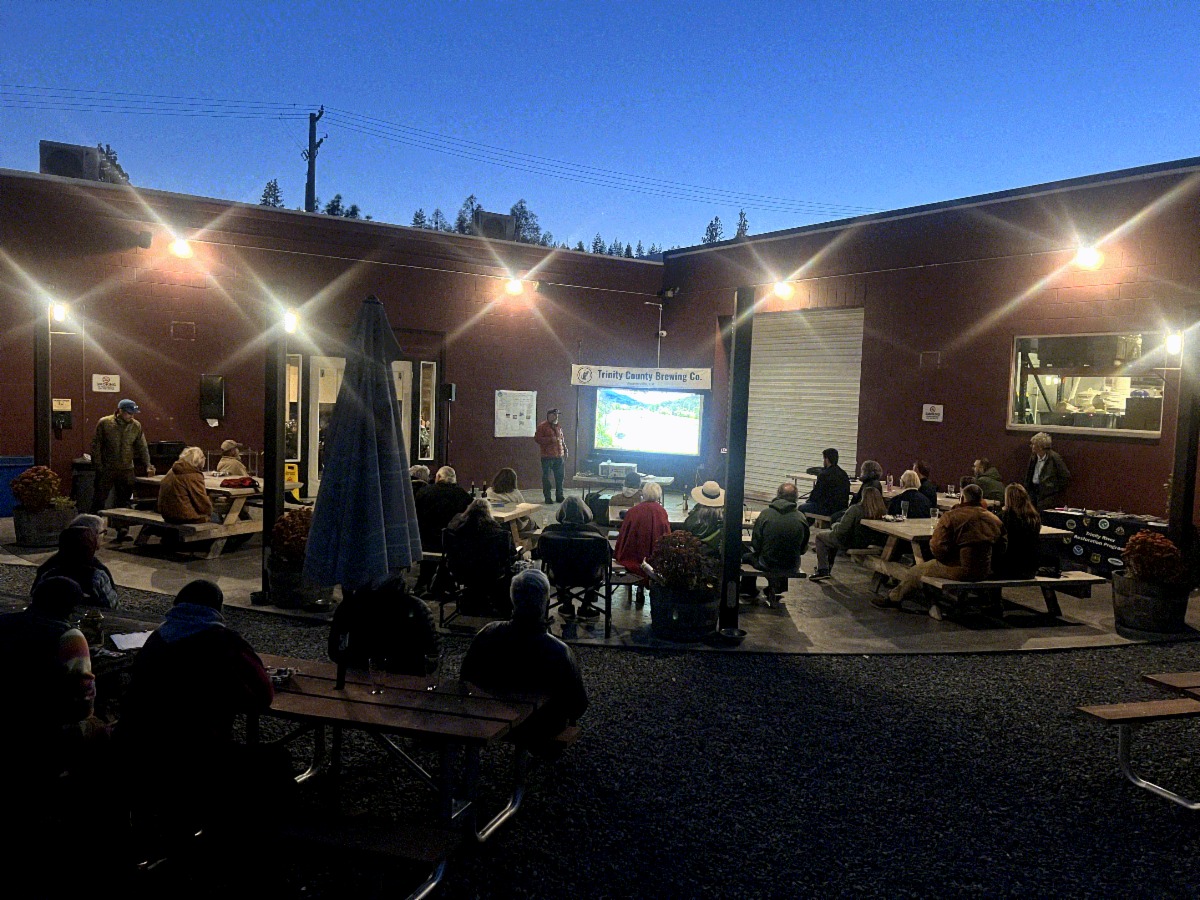
That’s a wrap for our 2024 Science on Tap series! We had a great season with some very informative presentations. Our team is working on putting together recorded sessions from four of those presentations given over the past few months. Find the videos and a line-up of past and future presentations by clicking the button below. Thanks for a fabulous season and we look forward to seeing all of you starting in January 2025.
Featured Article
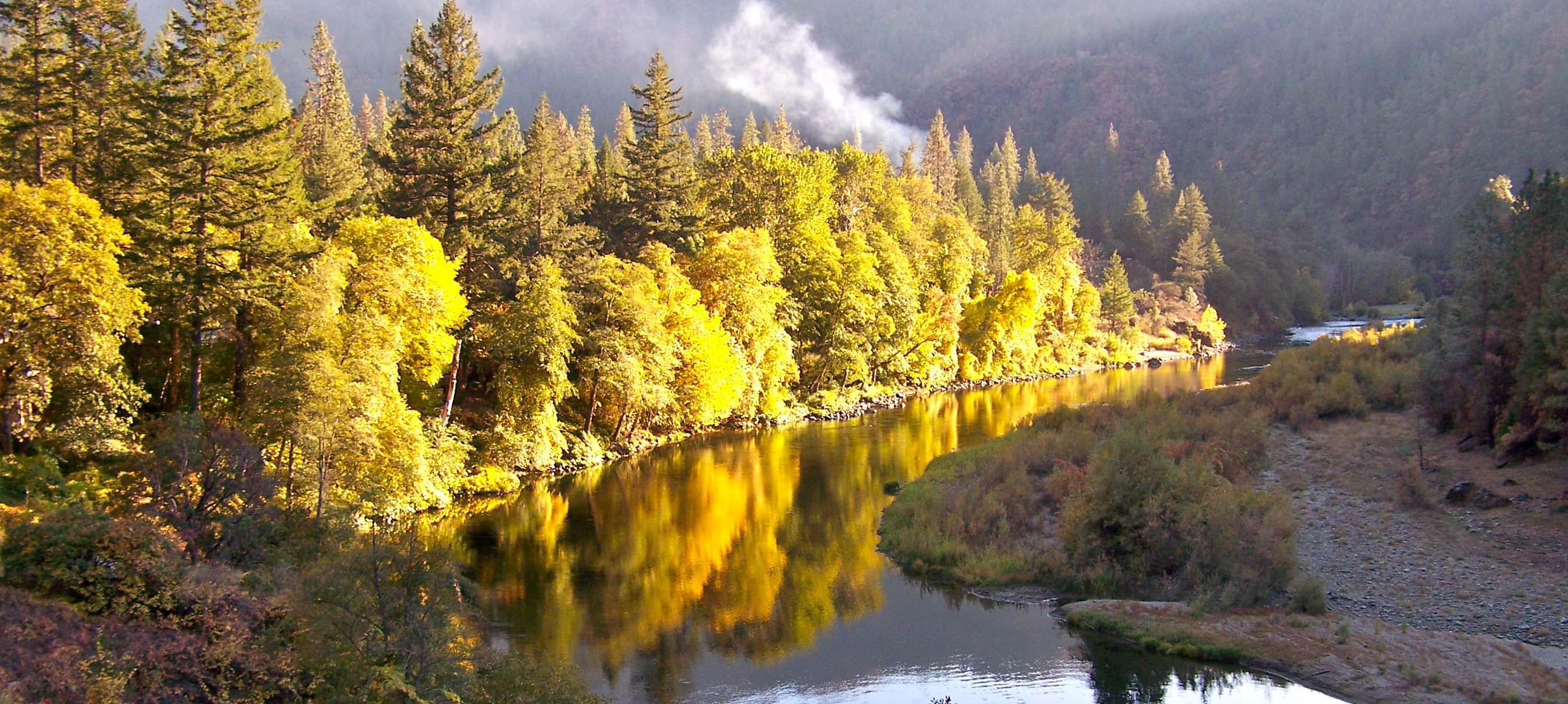
The Language of Flow
Rivers are vital parts of our ecosystems, and they behave differently depending on the climate they flow through. In a Mediterranean climate, which is characterized by hot, dry summers and variable, wet winters, river flow can be particularly interesting. Let’s explore some important terms and concepts related to river flow that is represented in our unique climate and system.
Trinity River Watershed: Animal Spotlight
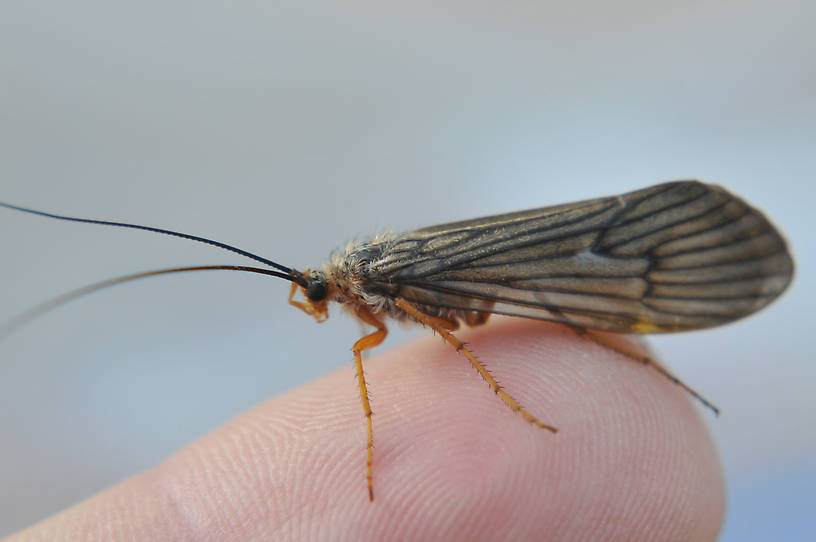
Bug of the month: October Caddisfly
genus Dicosmoecus
Dicosmoecus (dee-co-smee-cus) caddisflies are better known by the common name ‘October caddisflies’. These caddisflies are notable for their extremely large size (1-2 inches), their concentrated emergence window (October), and their abundance especially in streams containing anadromous fish. These characteristics make it one of the most important hatches to not only fly-fishermen, but to wildlife such as birds as well.
Photo Credit: TroutNut.com
Upcoming Meetings and Events
For a full list of events, click to view the TRRP Calendar.
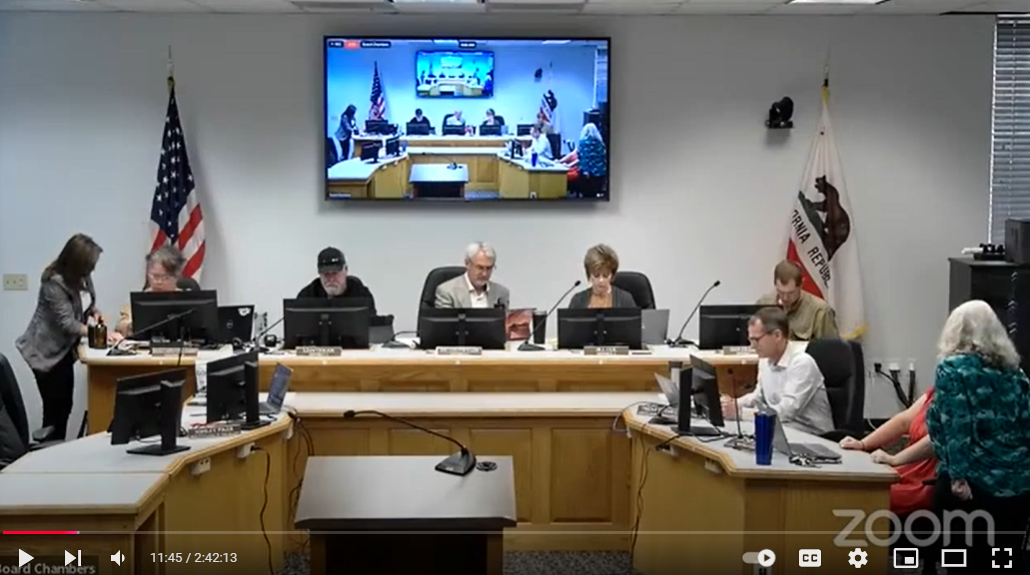
December 3 – 9am
WY2025 Environmental Flow Recommendation
Trinity County Board of Supervisors Presentation
In Person: Trinity County Library
Board of Supervisors meetings are available via zoom using the meeting ID and passcode listed below.
View Live and participate via Zoom
Meeting ID: 595 007 2851
Passcode: 267684
Call in: 1 (669) 900-6833
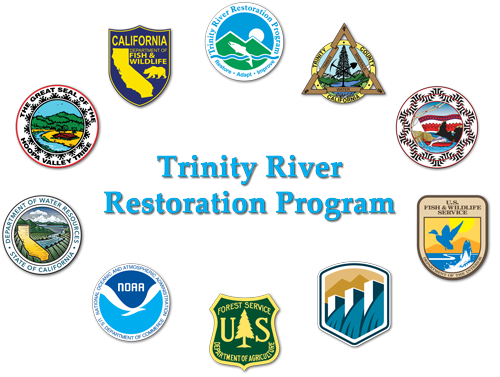
December 4 & 5 – All Day Quarterly TMC Meeting
In Person: CalTrans West Venture Building 1031 Butte St, Redding CA 96001
Click here to join the meeting
Meeting ID: 273 484 281 409
Passcode: vHAeKC
Contact Us
Call Us: 530-623-1800 Email Us: info@trrp.net
